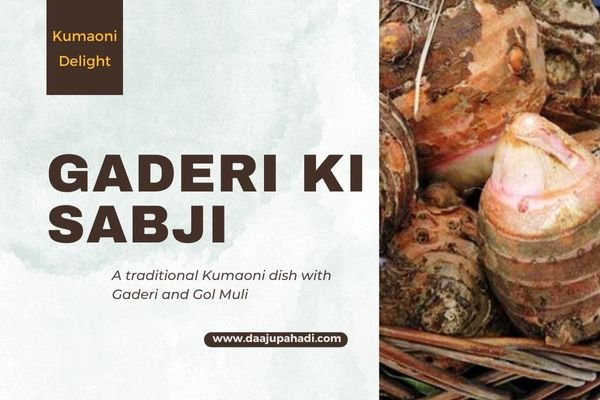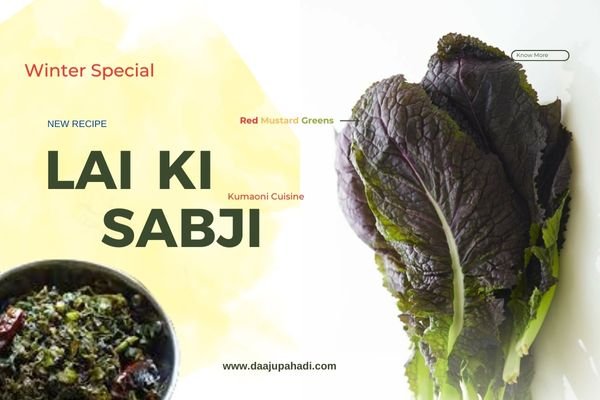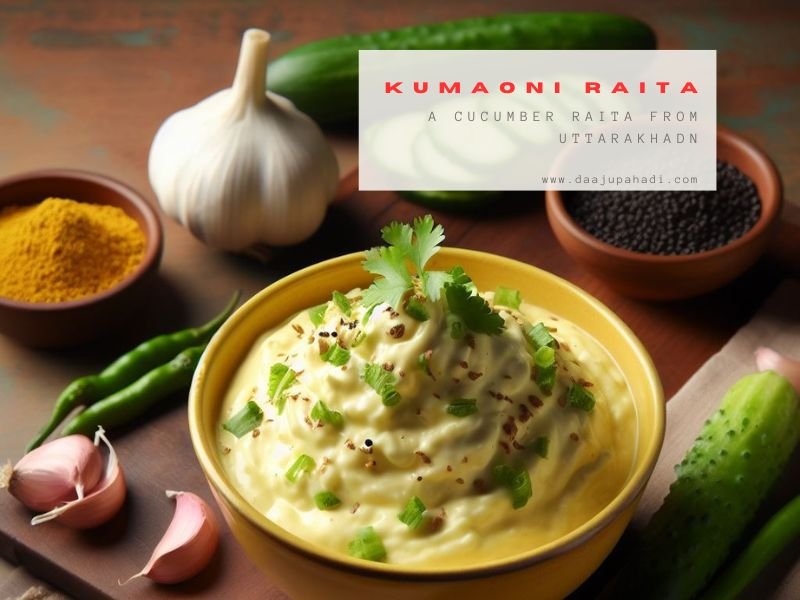
Have you ever heard of a plant that can sting like a scorpion, but also heal like a medicine? A plant that can be used as food, fibre, and fuel? A plant that is a part of the rich and diverse culture and lifestyle of the Kumaoni people? If not, then let me introduce you to bichu buti, the wonder plant of Kumaon.
Bichu buti, also known as stinging nettle, is a perennial herb that grows wild in the Himalayan region, especially in Uttarakhand. It has sharp and hard hairs on its stems and leaves, which can cause intense pain and inflammation when touched. However, this plant also has many benefits and uses, which make it a valuable and versatile resource for the Kumaoni people.
In this blog post, I will tell you more about bichu buti and its uses and significance in the Kumaoni culture and lifestyle. I will cover the following topics:
By the end of this blog post, you will learn how bichu buti can enrich your life and lifestyle, and why it is a wonder plant of Kumaon.
Health Benefits and Medicinal Properties of Bichu Buti
Bichu buti is not only a stinging plant, but also a healing plant. It has many nutritional and medicinal properties, which can help with various health issues and conditions. According to [Herbpathy], bichu buti is rich in vitamins, minerals, antioxidants, amino acids, and other phytochemicals, which can boost your immunity, blood circulation, digestion, metabolism, and overall health.
Some of the health benefits and medicinal uses of bichu buti are:
- It can help with anaemia, as it is a natural source of iron and folate, which are essential for the production of red blood cells.
- It can help with asthma, bronchitis, and other respiratory problems, as it has anti-inflammatory, antihistamine, and expectorant properties, which can clear the airways and reduce inflammation and mucus.
- It can help with arthritis, gout, and other joint and muscle pains, as it has analgesic, anti-inflammatory, and antirheumatic properties, which can relieve pain and swelling and improve mobility and flexibility.
- It can help with urinary tract infections, kidney stones, and other kidney and bladder problems, as it has diuretic, antilithic, and antimicrobial properties, which can increase urine output, flush out toxins and stones, and prevent infection and inflammation.
- It can help with skin problems, such as acne, eczema, psoriasis, and wounds, as it has antibacterial, anti-inflammatory, and astringent properties, which can cleanse the skin, heal the wounds, and reduce the redness and itching.
There are many ways to use bichu buti for health and wellness purposes, such as making tea, soup, juice, or oil from its leaves, stems, roots, or seeds. However, you need to be careful while handling and preparing bichu buti, as it can cause severe skin irritation and allergic reactions. You should always wear gloves and use tongs or scissors to cut and wash the plant, and boil or steam it before consuming or applying it.
Kumaoni Cuisine and Bichu Buti
Bichu buti is not only a healing plant, but also a delicious plant. It is a part of the Kumaoni cuisine known for its simplicity, variety, and nutrition. Bichu buti adds flavour, texture, and nutrition to the dishes, and is especially popular during the winter season when it is abundant and fresh.
Some of the most popular and delicious bichu buti dishes are:
- Kandali ka saag: This is a traditional dish made by boiling and mashing the bichu buti leaves, and then tempering them with mustard oil, garlic, red chillies, and salt. It is served with rice or roti and is a rich source of iron, calcium, and vitamin C.
- Bicchu Buti ki chai: This is an herbal tea made by boiling the bichu buti leaves with water, ginger, cardamom, and sugar. It is a soothing and refreshing drink, which can help with colds, coughs, sore throats, and headaches.
- Bicchu Buti ka raita: This is a yoghurt-based dish made by mixing the boiled and chopped bichu buti leaves with yoghurt, salt, and roasted cumin powder. It is a cooling and digestive dish, which can balance spicy and oily food.
You can enjoy these bichu buti dishes with rice, roti, or other accompaniments, such as dal, chutney, or pickle. You can also experiment with your own recipes and variations, and discover the different tastes and benefits of bichu buti.
Have you ever heard of Gaderi ki sabji? If not, you are missing out on…
Do you love green leafy vegetables? If yes, then you must try lai ki sabji,…
Badi ki sabji is a traditional dish from the Kumaon region of Uttarakhand, India. It…
If you are looking for a simple yet delicious way to beat the heat and…
Have you ever heard of Bal Mithai? It is a delicious sweet from the hills…
If you are looking for a unique and delicious sweet dish from the Himalayan region…
Kumaoni Crafts and Bichu Buti
Bichu buti is not only a delicious plant, but also a useful plant. It is a source of Allo fibre, which is extracted from its stem and used to weave shawls, carpets, bags, and other products. Allo fibre is a natural and eco-friendly fibre, which is soft, strong, durable, and warm.
Allo products are a part of the Kumaoni crafts, which reflect the skill, creativity, and tradition of the Kumaoni people. Its products have cultural and economic value, as they are a means of livelihood, identity, and expression for the local artisans and communities.
Aipan Art Of Uttarakhand: A Traditional And Ritualistic Folk Art
Some of the most beautiful and unique Allo products are:
- Allo shawls: These are hand-woven shawls made from Allo fibre, which are dyed with natural colours, such as indigo, turmeric, walnut, and madder. They have intricate patterns and designs, such as geometric, floral, or animal motifs, which are inspired by the nature and culture of Kumaon. They are warm, cozy, and elegant, and can be worn as a scarf, wrap, or blanket.
- Allo carpets: These are hand-knotted carpets made from Allo fibre, which are decorated with colourful and vibrant patterns and motifs, such as stars, flowers, birds, or animals. They are soft, durable, and attractive, and can be used as a floor covering, wall hanging, or bedspread.
- Allo bags: These are hand-made bags made from Allo fibre, which are embellished with embroidery, beads, mirrors, or tassels. They have different shapes and sizes, such as pouches, purses, or backpacks, and can be used to carry your essentials, such as money, phone, or books.
You can buy, use, and care for these Allo products, and support the local artisans and communities of Kumaon. You can also appreciate the beauty and diversity of bichu buti, and how it can be transformed into various forms and functions.
Conclusion
You have just learned about bichu buti, the wonder plant of Kumaon, which has many benefits and uses for your health, food, and craft. And discovered how this plant can sting you like a scorpion, but also heal you like a medicine. You have also explored how this plant can nourish you like food and clothe you like a fibre. You have appreciated how this plant is a part of the rich and diverse culture and lifestyle of the Kumaoni people.
This blog post was meant to introduce you to bichu buti and its uses and significance in the Kumaoni culture and lifestyle. But there is much more to learn and experience about this plant, and the people and places of Kumaon. The best way to do that is to visit Kumaon, the land of bichu buti, and see and try it for yourself.
I hope you have enjoyed reading this blog post, and found it useful and informative. I also hope you have developed a curiosity and interest in bichu buti, and how it can benefit you in many ways.
If you have any feedback, comments, or questions, please feel free to contact me or leave a comment below. I would love to hear from you and answer your queries.
Thank you for reading this blog post, and have a wonderful day. 😊
Please share this blog post with your friends and family, and help spread the word about the wonder plant of Kumaon. 🙏





